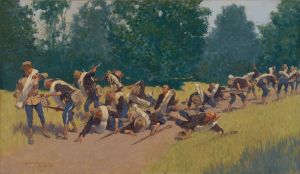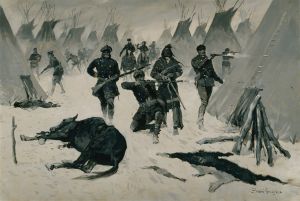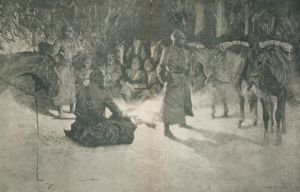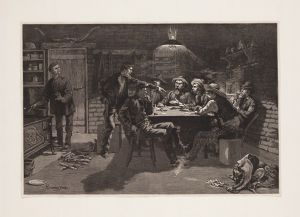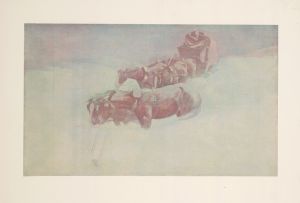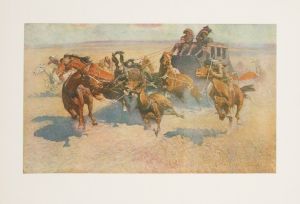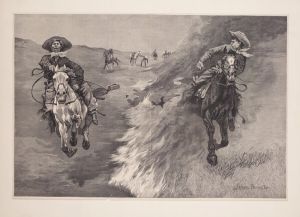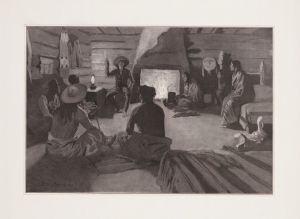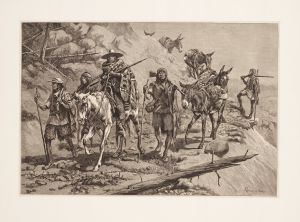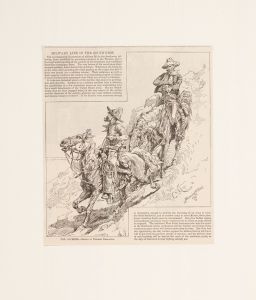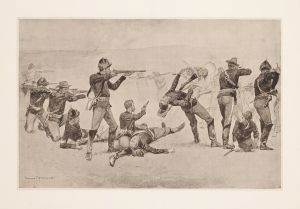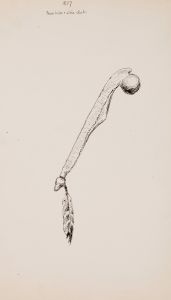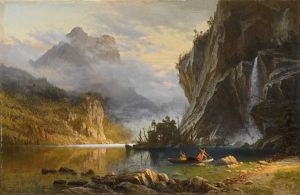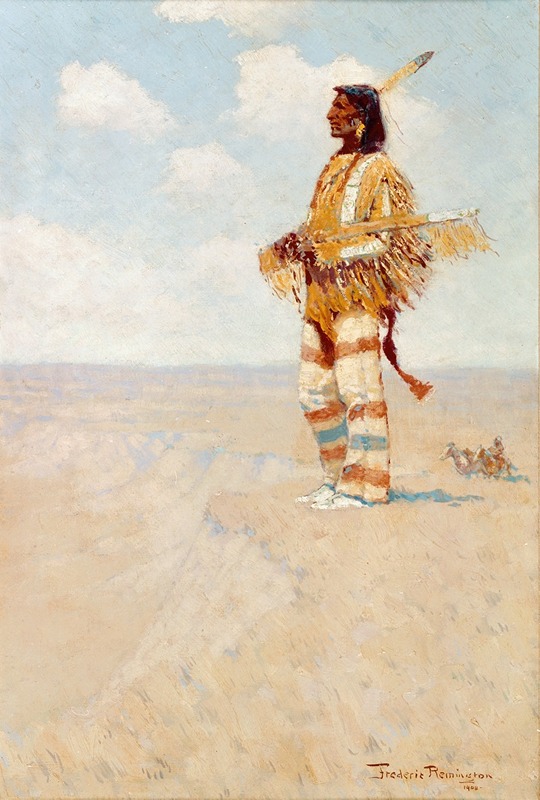
The Last of His Race
A hand-painted replica of Frederic Remington’s masterpiece The Last of His Race, meticulously crafted by professional artists to capture the true essence of the original. Each piece is created with museum-quality canvas and rare mineral pigments, carefully painted by experienced artists with delicate brushstrokes and rich, layered colors to perfectly recreate the texture of the original artwork. Unlike machine-printed reproductions, this hand-painted version brings the painting to life, infused with the artist’s emotions and skill in every stroke. Whether for personal collection or home decoration, it instantly elevates the artistic atmosphere of any space.
"The Last of His Race" is a painting by the American artist Frederic Remington, created in 1908. Remington is renowned for his depictions of the American West, focusing on themes such as the frontier, cowboys, and Native Americans. This particular work is emblematic of his interest in capturing the vanishing cultures and landscapes of the West during a period of significant change and development in the United States.
The painting portrays a solitary Native American figure on horseback, set against a vast and desolate landscape. The composition emphasizes the isolation and solitude of the figure, which is a common theme in Remington's later works. The title, "The Last of His Race," suggests a narrative of decline and disappearance, reflecting the widespread belief at the time that Native American cultures were vanishing due to the expansion of European-American settlement and the policies of the U.S. government.
Remington's work often romanticized the West, and "The Last of His Race" is no exception. The painting captures a sense of melancholy and nostalgia, which was a prevalent sentiment in the early 20th century as the frontier era came to a close. The use of light and shadow in the painting enhances the dramatic effect, highlighting the figure against the expansive sky and barren landscape.
Frederic Remington was born in 1861 in Canton, New York, and became one of the most prominent artists of the American West. He was not only a painter but also a sculptor and illustrator. His works were widely published in magazines such as Harper's Weekly, and he played a significant role in shaping the popular image of the American West. Remington's art is characterized by its attention to detail and dynamic compositions, capturing the movement and spirit of the subjects he portrayed.
"The Last of His Race" is part of Remington's later body of work, which is noted for its more somber and reflective tone compared to his earlier, more action-oriented pieces. This shift in style and subject matter is often attributed to Remington's changing perspective on the West as he witnessed the rapid transformation of the landscape and its peoples.
The painting is housed in the collection of the Museum of Fine Arts in Houston, Texas. It remains an important piece for understanding both Remington's artistic legacy and the cultural attitudes of his time. Through works like "The Last of His Race," Remington contributed to the mythologizing of the American West, creating images that continue to influence perceptions of this period in American history.
In summary, "The Last of His Race" is a poignant representation of Frederic Remington's artistic exploration of the themes of change and loss in the American West. The painting stands as a testament to Remington's skill in capturing the complex narratives of his era, offering viewers a window into the cultural and historical context of the early 20th century.





